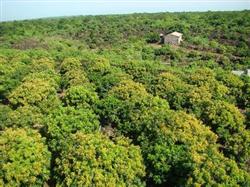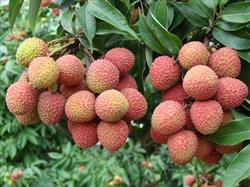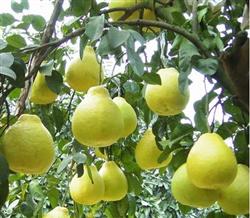Cultivation techniques of Litchi

Cultivation techniques 1. Young litchi tree shaping and pruning young trees mostly adopt the round head shape of the main branch, which is completed within 2-3 days after planting. The growth angle and orientation of branches were adjusted by means of pulling, brace, top, hanging and so on. Pruning and shaping of young trees were carried out at the same time. Coring, truncation, thinning and wiping buds were used to inhibit shoot growth and promote branches before shoot germination. Should be light rather than heavy, mainly cut off cross branches, over-dense branches, curved branches, weak twigs, as well as flower ears that do not let them bear fruit, so that nutrients can be effectively used to expand the crown. 2. Fruit tree shaping and pruning autumn shoots are the fruiting mother branches of litchi, which are usually cultured only once or twice. The first shoot should be in mid-late July, and the second shoot should be in late September. The second autumn shoot should be watered in time in case of dry weather, the leaf surface should be fertilized or sprayed outside the root, and when the late autumn shoot was close to turning green, 0.2% potassium dihydrogen phosphate and 0.3% urea should be sprayed. Fungicides and insecticides were sprayed at 3-8 cm of tender autumn shoots to control the pests of tea yellow thrips. If the new shoot is too long, it should be retracted evenly to keep the spacing between the left and right litchi trees at 50 cm. 3.Postharvest pruning after fruit harvest, cut off the fruit stalk, dry branches, withered branches and non-ideal branches damaged during fruit picking, as well as late autumn shoots after the End of Heat, and retain sunny branches, strong branches and well-growing horizontal branches as far as possible. Clean the countryside in time after pruning and concentrate on harmless treatment. 4. after pruning the wound, close the trimming mouth quickly with a sealant to prevent the wound from dry and cracked, invade by bacteria, and protect the wound to heal healthily.
- Prev

High yield and good quality cultivation techniques of Litchi
1. Choose the garden. Choose the hilly slopes with open terrain, slope below 30 degrees, loose and fertile soil, deep soil layer, organic matter content of more than 1%, and water sources as litchi plantations. two。 Choose the seedlings and put enough base fertilizer on them. Choose strong branch seedlings or grafted seedlings with many new roots, smooth branches and stems, disease-free and insect-free.
- Next

Early phosphorus sufficient potassium pomelo tree has high yield
Pomelo, also known as honey pomelo, branches and leaves fruit than citrus thick and broad, high yield per mu, fertilizer application is also more, is the "big eater" in the citrus family. The main producing areas of pomelo are mainly in South China, the soil is seriously short of potassium, and the amount of potassium fertilizer is about the same as that of nitrogen fertilizer. Pomelo nitrogen, phosphorus, potassium balanced fertilization, to control nitrogen fertilizer, early application of phosphorus fertilizer, application.
Related
- Moge, come on! The staff of the peasant association in the producing area of cantaloupe were frightened when the crowd gathered.
- Causes and Solutions of low Fruit setting rate of Apple
- Symptoms and control measures of passion fruit virus disease
- Fruit growing lesson: how do apple orchards keep high yields?
- Can you build orchards in the mountains? What are the pros and cons?
- How to manage the coloring period of Crisson grape?
- This paper introduces the processing technology of two kinds of fig products.
- How much is a month for retired teachers in rural areas by 2020?
- How can strawberry planting increase sugar content? We should pay attention to management in many aspects.
- What are the cultivation techniques on how to improve the yield of golden fruit?

